Start Ultralight Fishing for Largemouth Bass with Confidence

If you’ve ever stood by the water with an ultralight rod in hand, staring down a tackle box stuffed with spinnerbaits, wondering if today’s the day you finally unlock the secret to catching bass, you’re not alone. I’ve been there, too. Trying to figure out what works can feel overwhelming, but when I started ultralight fishing, the game completely changed for me. Spinnerbaits have become my not-so-secret weapon for catching bass, and I’ve had plenty of reaction strikes that still make my heart race.
Today, I’m sharing everything I’ve learned about using spinnerbaits to target bass, including my favorite spinnerbaits and tips to avoid what mistakes many anglers make. Along the way, I’ll also explain how to approach different water columns, how ultralight lures can help you catch big fish, and which species you can catch if small fish like crappie, perch, spotted bass, or smallmouth bass also pique your interest.
Why Spinnerbaits Are a Must for Ultralight Gear
I’ll admit it—I wasn’t always this confident with spinnerbait fishing. Early on, I struggled to understand how to fish them properly. My retrieves were erratic, my casting was off, and I snagged more branches than bass. That was until a fishing buddy taught me a few tricks. The moment I felt my first strike on a spinnerbait, I was hooked, literally and figuratively.
Here’s why spinnerbaits are top-tier for ultralight fishing:
- Versatility: Spinnerbaits work in shallow and deep water, clear or murky conditions.
- Attraction power: The flashing blades and vibrating hum trigger strikes from bass hiding in cover.
- Snag resistance: Unlike crankbaits, spinnerbaits glide through grass, logs, and other obstructions with less frustration.
If you’re just starting out ultralight fishing, spinnerbaits are an ideal way to gain confidence while learning how to finesse those tricky water conditions.
Timing Is Everything with Spinnerbaits
Knowing when to throw a spinnerbait can make the difference between a slow day and a hauling one. Here are the situations where spinnerbaits shine the brightest.
Dawn and Dusk
Low light is prime time for bass to roam the shallows hunting for prey. A spinnerbait’s flash draws them in like a dinner bell. Slow rolling your lure along the edges of weed beds or submerged structure during these hours can create explosive strikes.
Overcast Days with Wind
Some of my best fishing days have been cloudy ones. The reduced light and rippled water make bass aggressive, and spinnerbaits excel at grabbing their attention. They mimic the erratic movement of baitfish, which gets bass to hit hard.
Around Cover and Structure
Spinnerbaits are a lifesaver in snaggy areas like submerged logs, dock pilings, and grass beds. They’re designed to move through these spots with minimal hang-ups while enticing bass to strike from their hiding spots.
When Water Is Muddy
Muddy water might seem intimidating, but it’s actually ideal for spinnerbait fishing. The flashy blade and thumping vibration help bass find your lure even when visibility is poor.
Success in Muddy Water with Spinnerbaits
Spinnerbaits excel in muddy water conditions due to their ability to attract bass through vibration and flash. Bass rely heavily on their lateral lines to detect movement and vibrations when visibility is low, making the thumping blade of a spinnerbait particularly effective.
The pulsating action and bright flash mimic the movements of injured prey, drawing bass out from cover even in the murkiest waters. To maximize success, choose spinnerbaits with larger blades and brighter colors to stand out even more in poor visibility.
Choosing the Right Spinnerbait for the Job
Not all spinnerbaits are created equal, and it’s essential to match your tackle to the conditions. Here’s a breakdown of the types I regularly use.
Safety-Pin Spinnerbaits
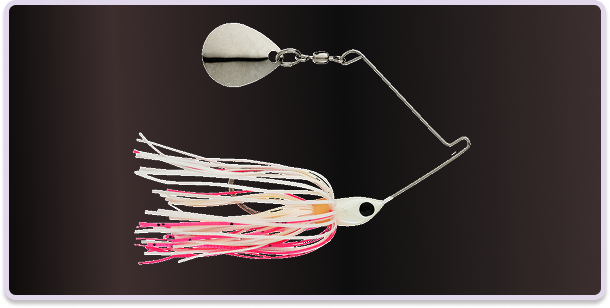
This classic design features a bent wire frame, one or more blades, and a skirted hook. They’re reliable and effective for fishing through grass or murky water.
- Best for: Heavy cover or off-color water.
Inline Spinners
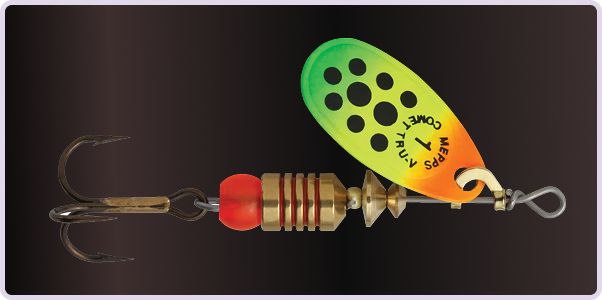
These have the blade spinning directly around the shaft, which creates a more subtle presentation. They’re great for ultralight setups.
- Best for: Finesse fishing in clearer water or during slow bites.
Buzzbaits
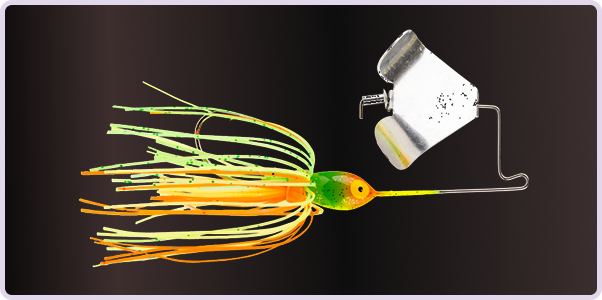
Buzzbaits churn the surface with their propeller-like blade, creating bubbles and noise that draw bass up from the depths.
- Best for: Shallow water during dawn or dusk, and when targeting bass hunting topwater.
One thing I swear by is experimenting with trailers. Adding a soft plastic to your spinnerbait, like a paddle tail or grub, can completely change its action and help convert curious bass into aggressive attackers.
My Favorite Spinnerbaits for Ultralight Success
After years of trial and error, I’ve narrowed down my favorite spinnerbaits for ultralight fishing. These ultralight lures are small but mighty.
-
Panther Martin Classic Spinner

Compact and deadly, this spinner excels when slow rolling it along rocky points or weedlines. Its subtle vibration is perfect for enticing bass in smaller creeks or ponds. -
Mepps Aglia Inline Spinner

A timeless classic, this inline spinner creates just the right flash and thrum for wary bass. I turn to the #2 or #3 size for ultralight setups, especially in clear water. -
Strike King Mini-King Spinnerbait

Despite its tiny size, the Mini-King is a huge performer. The combination of its Colorado blade and bright skirt brings in bass from all around, especially in stained water.
For muddy water, I lean toward bold colors like chartreuse. If it’s crystal clear, silver or gold blades paired with natural hues work best.
Which Water Columns to Target
A major mistake many anglers make is focusing on just one part of the water column when fishing spinnerbaits. To truly unlock their potential, you need to experiment with shallow, middle, and even deeper zones.
- Shallow (0–5 feet): Perfect for dawn, dusk, or topwater action with a buzzbait.
- Mid-depth (5–15 feet): Slow roll a spinnerbait through weedlines and submerged structure here for consistent results.
- Deep (15+ feet): Use a heavier spinnerbait to fish drop-offs or channels where big bass might be hanging out.
Switch up your retrieves as well. Play with steady, erratic, and slow rolling motions to see what triggers the reaction strike.
Species You Can Catch Beyond Bass
Of course, spinnerbaits aren’t just for largemouths. Some of the best surprises while ultralight fishing have been crappie, smallmouth bass, spotted bass, and perch. While targeting these species, I often tone down the lure size and keep my retrieves slower and smoother, which keeps small fish interested while still appealing to larger catches.
Giving Old Ultralight Lures a Second Chance
Here’s a tip for getting extra mileage out of beat-up spinnerbaits. If a skirt is torn or a blade’s off balance, don’t toss it just yet. I’ve swapped skirts, adjusted wire frames, and even replaced blades to bring ultralight lures back to life. Sometimes those “ugly fixes” end up catching the biggest fish.
FAQ Section for Ultralight Fishing Beginners
- What are ultralight spinnerbaits, and why are they effective for largemouth bass?
Ultralight spinnerbaits are compact, lightweight fishing lures designed to mimic the movement of small fish. They are highly effective for catching largemouth bass because they provoke strong reactions, especially in clear or shallow water, where bass are more likely to spot their movement quickly.
- What are the benefits of using ultralight fishing gear for bass fishing?
Ultralight gear offers better sensitivity, allowing anglers to feel even the smallest bites. This translates into improved hooksets and overall success when fishing for largemouth bass. Additionally, it makes fishing more enjoyable, even when targeting smaller fish.
- What techniques should beginners use when fishing with ultralight spinnerbaits?
For beginners, try slow and steady retrieves to mimic the natural movement of prey. Experiment with varying speeds or pauses to attract more attention from largemouth bass. Pay attention to the conditions, such as water clarity and temperature, which can affect the effectiveness of your presentation.
- Can ultralight fishing gear handle larger fish?
Yes, ultralight gear can handle larger fish like largemouth bass, though it requires more skill and patience. The key is to maintain steady pressure and use your drag system effectively to tire out the fish without snapping the line.
- What are the top picks for ultralight spinnerbaits on the market?
Some top picks include compact spinnerbaits with strong hooks and realistic skirts, like the Strike King Mini-King or Booyah Pond Magic. These spinnerbaits are highly recommended for their ability to perform well in a variety of fishing conditions and attract largemouth bass with ease.
By incorporating ultralight spinnerbaits and techniques into your fishing routine, you'll unlock new levels of success while enjoying the thrill of targeting largemouth bass.
Final Tips to Start Ultralight Fishing with Spinnerbaits
If I could leave you with one key takeaway, it’s this: Start ultralight fishing with confidence by keeping things simple. A light-action rod, a few of my favorite light lures like spinnerbaits, and a willingness to experiment with retrieves and depth are all you need to get started.
Every cast holds the potential for a story-worthy strike. Whether you’re catching spotted bass in a clear stream, smallmouths in rocky rivers, or crappie and perch in your local pond, light lures like spinnerbaits offer endless chances to learn, adapt, and land fish.
Get out there with a rod in hand, and remember that each cast is another chance to improve. Tight lines and big hookups!







.png)


 1.png)
 1.png)





.png)
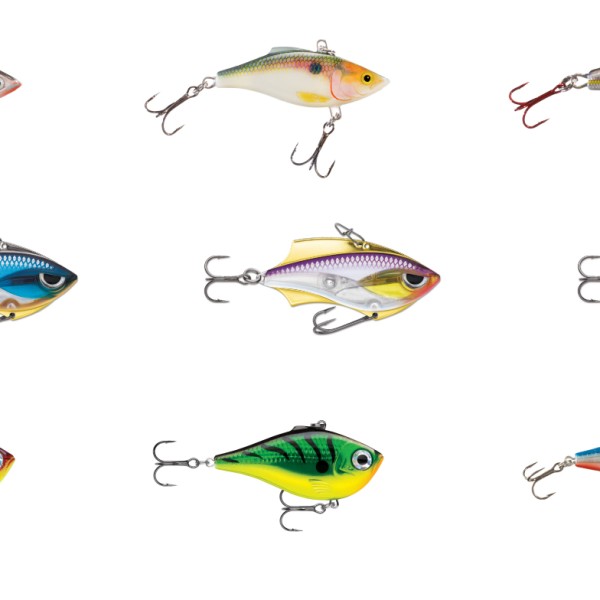
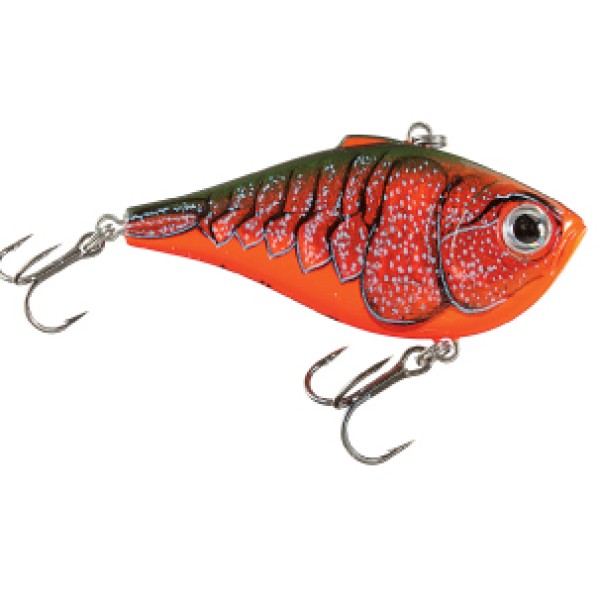
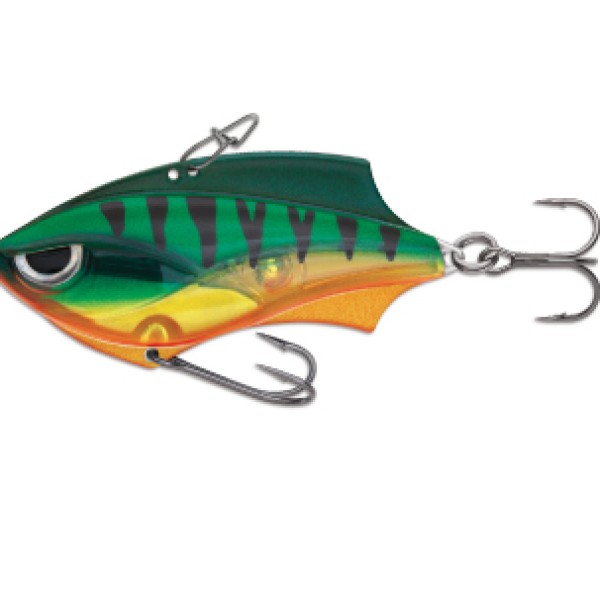
 Newsletter
Newsletter

